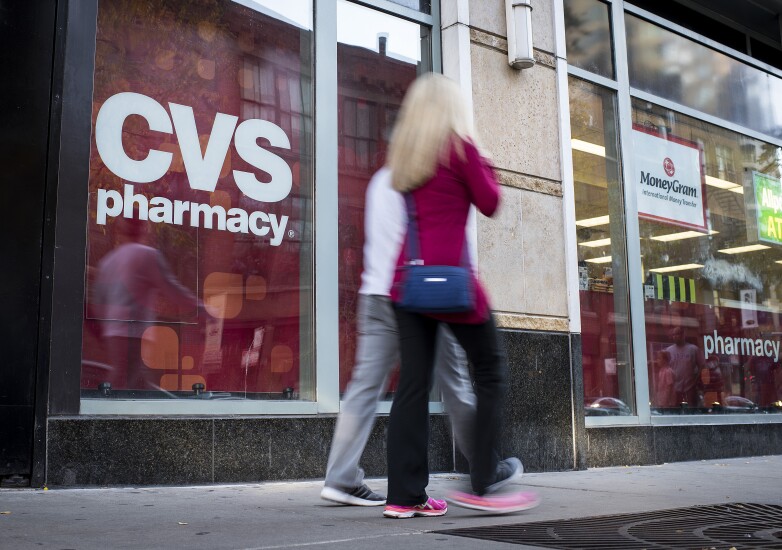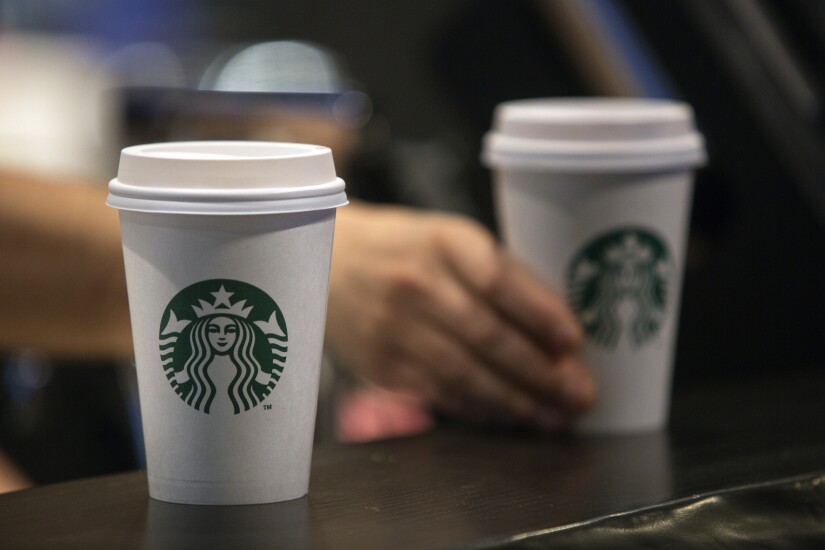
This market has come a long way since the one-size-fits-all strategy behind the Merchant Customer Exchange's CurrentC wallet, which sought to solidify merchants' control of customer data. Ultimately, the stores behind MCX — including heavyweights Walmart and Target — realized that they didn't need to confront Apple Pay or Android Pay head-on.
Today's mobile-savvy consumer might have a variety of retailer apps on their phones, but they probably do not think of them as mobile wallets. In addition to payments, these apps handle marketing, loyalty, rewards and customer service — often linking to programs that shoppers regularly use in other channels.

CVS Pay's contrarian approach
Instead, CVS developed
A customer getting medicine may need to provide a prescription, ID, birth date PIN, loyalty card and other information before they even get to the payment. By putting all of these things into a mobile app,
Walgreens, a CVS competitor, has taken a similar approach to mobile technology. Its 2011 "
CVS will rely on its customers' existing use of digital technology to drive adoption of its mobile payments app. The CVS Pay feature is designed to tie into other interactions that come before the payment. In this way, it is similar to the wildly successful

Kohl's Pay puts loyalty first
Kohl's Pay allows more than 25 million active Kohl's cardholders nationally to pay for in-store purchases through their mobile phone while also applying any Kohl's offers, Kohl's Cash and Yes2You Rewards at checkout.
In that manner, Kohl's brought a consumer mobile experience with
Prior to adding Kohl's Pay, the company says the Kohl’s mobile app already had more than 14 million downloads, with a key feature being the option to scan and store Kohl’s gift cards, Kohl’s Cash and savings offers.

Target's long overdue (and undercooked) Wallet
Target Wallet is also somewhat restrictive in its payment options since payments can only be made using Target’s own REDcard — but this could also be seen as its strength, given that REDcards were used in 24.2% of Target sales in the third quarter.
Target’s strategy ensures that the retailer gets holistic control of the customer experience and, more importantly, can track purchase activity without customer credentials being obfuscated by third-party tokenization.
Target, like Walmart, probably has a sufficiently broad and loyal customer base to make the provision of a standalone mobile payment platform viable. However, allowing other types of payments beyond REDcard within the wallet may be required in order to gain more widespread traction.

What's up with Walmart Pay?
At first glance, the Bentonville, Ark.-based retailer's mobile payments approach looks decidedly low-tech, asking consumers to scan QR codes rather than duplicate the wireless magic of Apple Pay or Android Pay. It also sticks to familiar funding methods such as credit and debit cards and seemingly does nothing that hasn't been tried before.
But Walmart’s strategy is anything but simple. A year after the wallet's launch, it became a means of issuing credit to Walmart shoppers.
Customers approved for Walmart’s store-brand credit card or its Walmart Mastercard may immediately use those accounts to pay via a virtual card within the Walmart Pay app. Synchrony Financial is Walmart’s credit card issuing partner.

How Speedpass became a wallet
Speedpass dates back to
Technology has helped bring ExxonMobil's gas station operators on board with both Speedpass+ and Plenti, said Bryant Russell, ExxonMobil’s U.S. program manager for mobile payment and loyalty.
The Speedpass+ application, which is integrated with the Plenti multi-merchant loyalty system, interacts with gas station equipment via geolocation technology that recognizes Speedpass+ users. “There’s no change from a hardware point of view,” Russell said.
Speedpass+ also allows customers to apply for and begin using an ExxonMobil credit card in the application before the physical card arrives in the mail.
ExxonMobil also supports other high-tech payment options such as the Apple Watch or a Ford vehicle with SYNC 3 technology. "It’s incumbent on us to innovate and stay in touch," Russell said.

Starbucks' shocking mobile momentum
The Starbucks app is a rare early success story for mobile wallets, which have traditionally stumbled due to lack of retailer support. Starbucks chose to play to its strengths by building its app on top of the coffee chain's wildly successful gift card program — and address its own pain points by integrating rewards and reloads into the app, alleviating the need to manage those tasks at the cash register.
It also added fast-growing features such as Mobile Order & Pay, which accounts for 9% of all U.S. transactions as of July.
Starbucks also is shifting to a cloud-based platform to support its rewards program, enabling more flexibility, including the ability to give special rewards to subsets of customers.

Dunkin strikes back against Starbucks
The companies have different audiences and a different focus for their apps. Dunkin' says its customers are less likely to hang out at their stores and are more interested in getting their food and drinks and heading on to their destination.
Thus, the Dunkin' app was designed with a focus on mobile ordering and gifting to reduce the need for human interaction.
Dunkin' Donuts expected consumers would embrace the convenience mobile payments added to their routines, but it didn't expect to see the growth of new products mobile payments inspired, including a huge surge in gift cards sold through the app.





